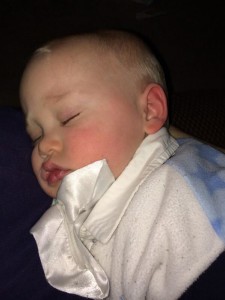
The bedtime routine: why you probably already have one even if you don’t think you do.
The bedtime routine may be one of the most important habits you can start with your baby, beginning as young as just four or six weeks of age. You may not think you even have a “bedtime routine” but you probably do. Over the coming weeks, it’s increasingly beneficial to help cue him that it’s time to sleep. As he moves into toddlerhood, a well-established bedtime routine helps limit “bedtime battles”. Your baby’s pre-sleep routine should be short and simple enough so that it’s easy to remain consistent night after night, and should ultimately serve the purpose of ending with your baby sleepy and relaxed.
Routines rather than schedules: Bookends to the Day
Aim to begin your routine around the same time most evenings. A strict “bedtime” is not necessary, but maintaining general consistency most nights means that bedtime, night feeding and morning wake up times will gradually become more predictable. Think of the “bedtime” and “morning wake up” time as the “Bookends to the Day”. Having approximate windows of time (generally within 30 minutes in either direction as your baby gets older) will lead to more predictability and will help with building routines. For example, when your baby begins to have a fairly consistent morning wake up time, you’ll find that the first nap of the day begins to happen at a more predictable time as well. Rather than thinking of these as rigid “schedules”, stay flexible and think of creating patterns and routines to guide various part of your days.
Short, Sweet and Consistent
The bedtime routine can be a pleasant, loving, soothing experience for you and your baby and will probably include a final breastfeeding or bottle, fresh diaper and pajamas. Don’t be surprised if your baby cries during part of it: not all babies love the act of being swaddled (but still do sleep better once they are), and some don’t have patience to rock and read books. Keep your routine short, sweet and consistent.
After feeding, washing, diapering and dressing for sleep, begin your pre-sleep relaxation activities.
Parts of the bedtime routine at this point might include: rocking, singing or humming, listening to soft music, bouncing on a ball, swaddling, massage, reading stories, saying prayers or saying special goodnights before bed. Your goal with the pre-sleep routine is to have your baby feel comforted, loved, sleepy and ready for bed, but awake when he goes into his crib.
What about bathing?
You may like to do an evening bath especially as your baby gets older if this is an enjoyable part of your evening routine. Parents do find that babies who enjoy their bath play and seem relaxed or tired out after bathing, so it can be a nice part of the evening routine. Or, you may feel that a daily bath is quite a big production, and is too time consuming or stressful to choose to do each day. Either way is fine.
It’s true that a baby doesn’t need a daily bath. They don’t get too dirty, and you spot clean them when they do, such as after a diaper blow-out. Places to wash morning and evening include the face, neck folds and behind the ears (where dried spit up collects) and your baby’s hands. For babies with dry skin, a daily bath with soap and shampoo can make the skin even drier. If you choose to do a daily bath, only use soap and shampoo a few times a week rather than every day. Add a few drops of jojoba, coconut or olive oil to the bath water on the days you’re not using soap and your baby’s skin will stay soft and silky.
Drowsy but Awake is hard but does work
With practice, most babies soon recognize the routine and fall asleep in the crib with little or no fussing at all. If your baby has a hard time learning to fall asleep from the drowsy state on his own, there are a variety of techniques that can be useful and that don’t include harsh “crying it out” methods.
Environment is key! Your baby’s sleep environment should be cool, dark and quiet, especially in the early morning hours, with continuous white noise for better sleep.